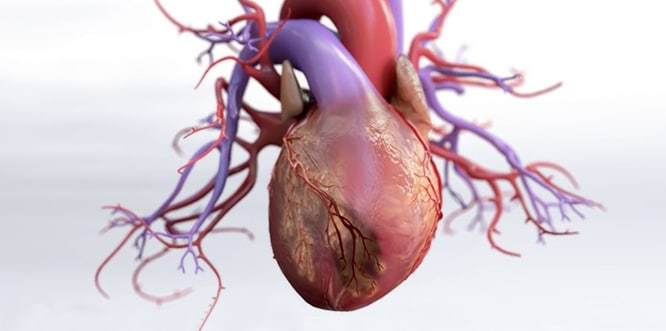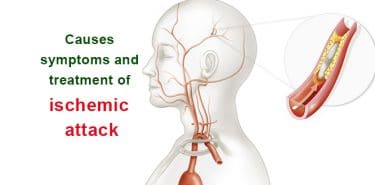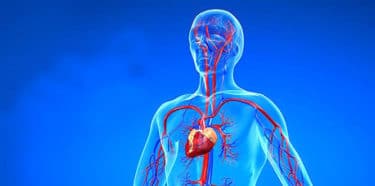Coronary artery disease develops as a result of narrowing or occlusion of the blood vessels that feed the heart. It is sometimes called ‘ischemic heart disease’. Angina (chest pain) and heart attack may occur when the blockage reaches a level that cannot meet the blood needs of the heart. Coronary artery disease can be prevented by adopting a simple lifestyle and dietary changes. It can often be treated with medications, but surgical treatment may also be required when drug treatment is not sufficient. Coronary artery disease is the most common cause of death. If you have symptoms of a heart attack, you should call the emergency services. Early treatment is life-saving.
Table of Contents
What is Coronary Artery Disease (CAD)?
Continuous blood flow is required for feeding of the heart. The arteries that provide this blood flow are called coronary arteries. Coronary artery disease (CAD) is a narrowing or occlusion of these coronary arteries, usually due to atherosclerosis. If enough oxygen and nutrients don’t arrive in the heart, angina (chest pain) and heart attack may occur.
Its symptoms are usually seen after 40 years of age. However, it can be seen at an earlier age, especially in individuals with a family history. Among common causes of death, coronary heart diseases come first.
Risk factors of coronary artery disease
- Advanced age: Coronary artery disease is often diagnosed between 50-60 years of age in men and 60-70 years in women.
- Male sex: It is 4 times more common in men than in women.
- Family history of coronary artery disease before age 50
- Smoking
- Diabetes
- Obesity
- Hypertension
- Cholesterol levels (when LDL, which is known as bad cholesterol, is more than 100 mg/dL, and HDL, which is known as good cholesterol, is lower than 40 mg/dL)
- Still lifestyle
- Alcohol consumption
- Stressful life
The presence of the above risk factors does not necessarily mean that coronary artery disease will develop.
Symptoms of coronary artery disease
- Angina Pectoris (Chest Pain)
- Heart attack
- Heart failure
- Arrhythmia (palpitations)
Angina Pectoris (Chest Pain)
It is the most common symptom. It is a discomfort that typically occurs with excessive efforts, comes with pain in the chest, lower jaw, shoulder, back, arms, and goes away with appropriate medication or rest. Pain can be felt on the stomach.
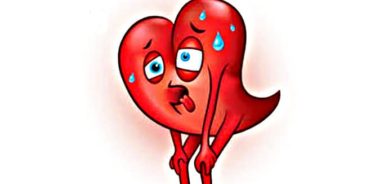
Discomfort is usually defined as pressure, compression, weight, or suffocation. The severity of the pain may be variable, and may be accompanied by dyspnea. Fatigue or fainting, nausea, belching, restlessness, fear of death are among the symptoms.
Discomfort usually does not last longer than 10 minutes. Symptoms increase when there is an increase in effort levels, and when these factors disappear, they disappear quickly within a few minutes. The intake of vasodilator drugs called nitrate rapidly removes angina.
Heart attack
It occurs when the blood vessels of the heart are completely blocked by blood clots that break down from the plaques. Tissue death occurs in the heart muscle due to insufficient blood and oxygen supply to the area where the obstructed vessels feed. Pain is a kind of pressure that spreads to chest, lower jaw, inter-shoulder region, back and arms.
Pain does not relieve with a rest or nitrates, and lasts longer than 15 minutes. It may be accompanied by cold sweating, shortness of breath, and heart palpitations.
Some patients may develop a heart attack without any symptoms. This is called ‘silent heart attack’. It develops mostly in the elderly and in people with diabetes.
Heart failure
It is a clinical condition that occurs when the heart fails to deliver the necessary and sufficient blood to the tissues and organs as a result of decreased heart performance. Heart failure can cause shortness of breath, swelling of the legs and prominence in the neck vessels. It may develop immediately or slowly.
Arrhythmia
It is the condition that heart rate becomes irregular. Patients often describe it as palpitations.
Diagnosis of coronary artery disease
Diagnosis is made after a good review of medical history, physical examination, blood tests and imaging methods.
Medical history
The patient’s complaints are questioned in detail. The severity, location, spreading and duration of pain are important. Risk factors such as whether there is a family history of heart disease or smoking are questioned as well.
Physical examination
The patient’s blood pressure is measured. Heart and lungs are checked with stethoscope. Edema in the legs and the vein fullness in the neck are checked. If heart disease is considered, further investigations are required.
Blood tests
Heart’s hormone and enzyme levels in the blood such as CK, CK-MB, troponin are measured. If there is a problem with the heart, the results of these tests may be elevated. Risk factors such as blood cholesterol and sugar levels are also examined.
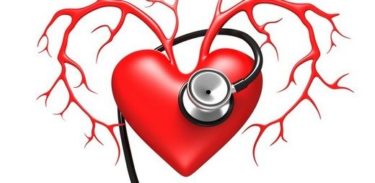
Imaging tests
- Electrocardiogram (ECG): It is a diagnostic method in which the electrical activity of the heart is recorded by electrodes adhered to the skin. Heart rate, rhythm, signs of insufficient blood and oxygen flow going to the heart muscle, and signs of previous heart attacks can be diagnosed with the help of ECG.
- Echocardiography (ECO): It is a heart ultrasound. It indicates if there is a movement disorder in the heart walls due to cardiac muscle tissue death. It provides valuable information about heart failure.
- Stress test: It is used for gathering information about how the heart works during physical activity. The heart rhythm, blood pressure and breathing are monitored while the person is walking on a treadmill or riding an exercise bike. It is a diagnostic method that helps in the diagnosis of occult coronary artery disease.
- Angiography: Angiography uses dye and special x-rays to show the interior of arteries. A thin and flexible tube called a catheter is inserted into a blood vessel in the arm, groin or neck. The dye, which can be seen on the X-ray image, is injected through the catheter into the arteries. With this method, the doctor can see the blood flow in the veins. This test can show whether the plaque is blocking arteries and how big its sizes is. It is used for both diagnostic and therapeutic purposes.
- Radionuclide test: It is the process of recording the image of the heart with a special camera by injecting radioactive material to the patient. It is used to show whether the heart muscle receives sufficient blood flow during exercise.
Treatment of coronary artery disease
Treatment plan for coronary artery disease is individual. It is made depending on the symptoms, number of diseased veins, degree of vascular stenosis, contraction strength of heart muscle, patient response to medication, age of patient, or presence of other diseases.
Objectives of treatment are to relieve the anginal symptoms, to prolong life, to prevent heart attack, to protect the heart’s functions and to increase the exercise capacity of the person. Drug treatment and surgical treatment can be administered individually or together.
Coronary artery disease medications
Antiplatets (Blood thinners)
The aim is to reduce the occurrence of coronary artery disease by diluting the blood and preventing formation of clots. Low-dose aspirin and clopidogrel are most commonly used. They are used in low doses to prevent clots and high doses in treatment of heart attacks. They can be used long term after a heart attack, angiography and bypass operation.
Statins
Since high cholesterol increases the risk of coronary artery disease, cholesterol-lowering drugs (statins) can be used. Simvastatin and atorvastatin are the most commonly used statin group drugs.
Beta blockers
They reduce the need for oxygen by reducing heart rate and contraction and lowering blood pressure. They are used in angina, high blood pressure and arrhythmia. Drugs such as atenolol and metoprolol are the most commonly preferred beta blockers.
Nitrates
They are vascular expanding drugs. They reduce chest pain by increasing blood flow and lowering blood pressure. However, side effects such as headache, redness of the face and dizziness may occur.
ACE (Angiotensin converting enzyme) Inhibitors
It acts by blocking the enzyme that narrows the blood vessels. It relaxes the heart by reducing high blood pressure. However, if you use an ACE inhibitor, you should have a kidney check. It can also have side effects such as cough, dizziness and high potassium.
Calcium channel blockers
They dilate the blood vessels by blocking the passage of calcium. They increase blood flow and lower blood pressure. Some types reduce heart rate and contraction. They are effective in angina by reducing heart workload. There are types such as amlodipine, verapamil and diltizem. It may have side effects such as headache and redness of face.
Diuretics
It acts by discharging excess water and salt from the body through the urine. It is used in heart failure and high blood pressure.
Digital group of medicines
They can be used in heart failure by increasing heart contractions. They can also be used to treat arrhythmias.
Surgical treatment for coronary artery disease
Coronary angioplasty
It is applied for diagnosing people with angina or for the immediate treatment of heart attack symptoms. Cardiovascular vessels are monitored by special methods to determine the degree of stenosis. During the procedure, the stenosis is passed through the guide wire.
Catheter with balloon is placed in the stenosis by advancing on the guide wire. The balloon is inflated and the stenosis is opened. If necessary, a stent can be inserted to maintain blood flow. This ensures that the heart muscle is re-fed.
Coronary artery bypass surgery
This method is used when medical or interventional therapies fail or there is too much cardiovascular occlusion. The veins feeding the leg, arm or chest front wall are prepared for a use as a graft to the heart with different incisions. Heart and lung are connected to the machine to fulfill their functions.
Reperfusion is ensured by bridging the heart regions where the occluded vessels feed. When all the procedures are completed, the heart starts working, and after the machine support is stopped, the oxygen rich blood is pumped into the body.
Heart transplant
If the heart is severely damaged, or medical and surgical treatments cannot be successful or serious heart failure develops, a heart transplant can be performed.
Herbal treatment of coronary artery disease
You should consult your doctor before starting any herbal treatment. Some herbal treatments may interfere with the medications you use and cause unexpected side effects.
Omega-3 fatty acid
It provides protection against coronary artery disease by reducing triglycerides and lowering blood pressure. It also reduces inflammation. Foods that contain omega 3: salmon, sardine, tuna, flaxseed and flaxseed oil, walnuts, hazelnuts, canola oil, and soy. Consuming at least twice a week from fishes rich in omega 3 fatty acids is very beneficial for heart health.
Vitamin D
Some studies have shown that the use of vitamin D reduces the risk of heart disease. Milk, eggs and shrimps are rich in vitamin D. However, sunlight should be received sufficiently for the synthesis of vitamin D.
Other nutrients that lower cholesterol levels or blood pressure:
- Artichoke
- Barley and oats
- Cocoa
- Garlic
- Sesame oil
Nutrition in coronary artery disease
Choose to eat heart-friendly foods:
- Include fruits, vegetables, cereals, nuts, and nutrients rich in omega-3 in your diet. You should consume 2-3 servings of vegetables and 2-3 servings of fruits a day.
- For lunch and dinner, choose cereals and vegetables as your main meal. If your main course is meat, make sure you add a salad or vegetable to your plate.
- Eat fish twice a week.
Recommendations for patients with coronary heart disease
- Go to a doctor’s check regularly.
- Do not smoke.
- You can exercise 5 times a week, 30 minutes daily. Use the stairs instead of the elevator. You should determine your exercise program according to your disease level.
- Stay away from a stressful life.

